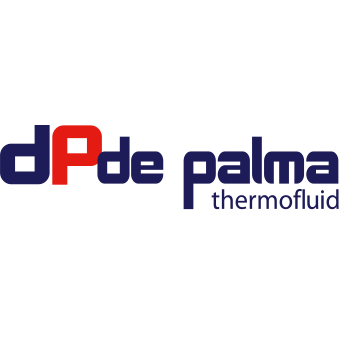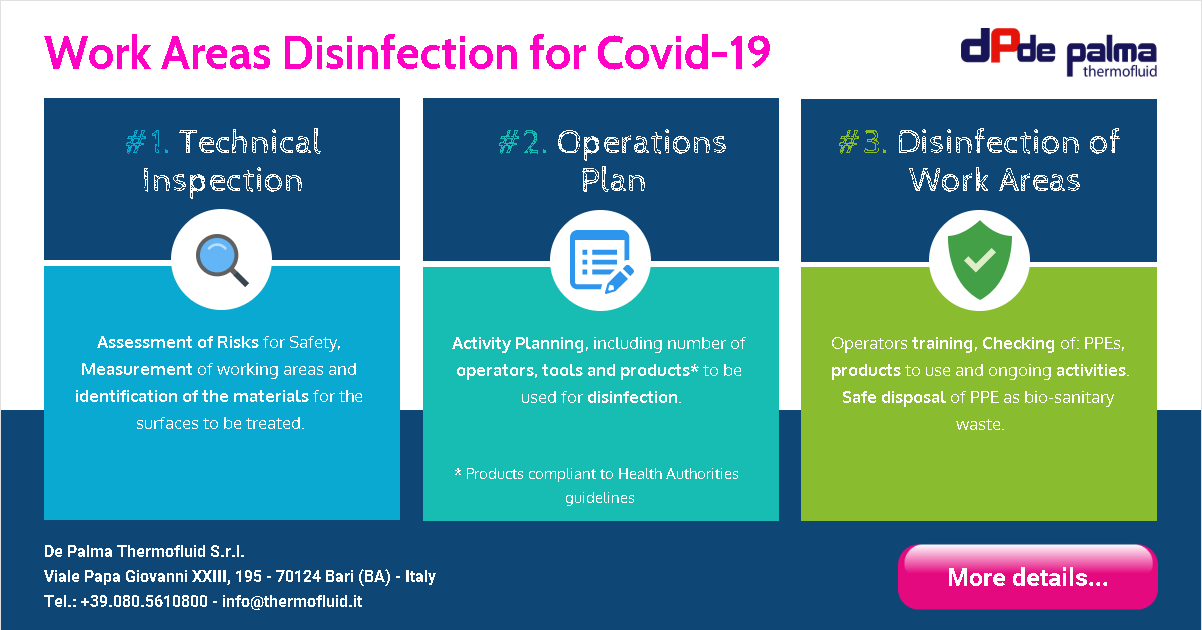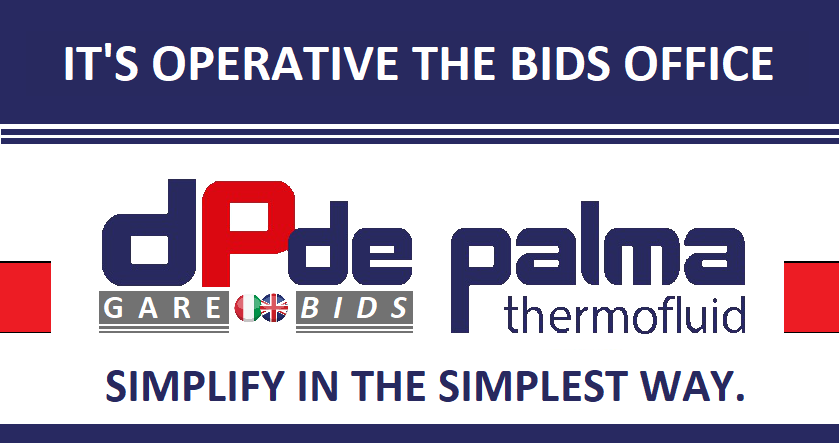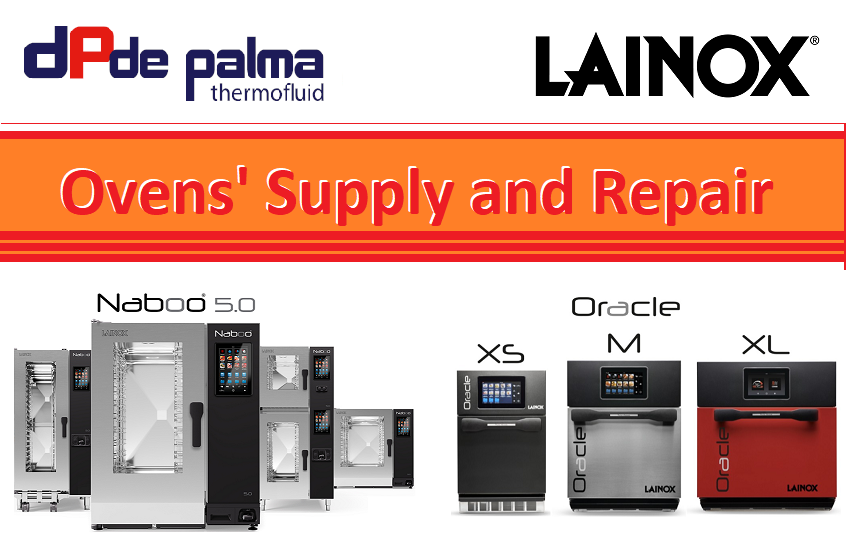It’s time to organize the operations restart after the stop due to Covid-19 crisis.
Companies are required to guarantee work spaces: for this reason today we present the service of disinfection of your work areas from Covid-19, using procedures and products compliant to the Health Authorities guidelines.
Do not hesistate to contact us: our technical staff will be at your disposal!
De Palma Thermofluid, below presents a draft of the project which illustrates the integrated strategy aimed at protecting the health of travelers and crew in passenger ships, preventing, especially in this moment of medical emergency, the diffusion, also cross-border, of the viral agent and improving public health. De Palma Thermofluid has now been at your side as a technical partner for years both for technical supplies and for ordinary and extraordinary maintenance services and interventions. These are dramatic hours. The entire Nation is fighting against the Coronavirus, so, the De Palma Thermofluid has gathered forces and has proposed a range of medical-surgical supplies with a proven virucidal efficacy capable of combatting the spread of the Sars-CoV-2 virus which is responsible of the Covid19 disease through the disinfection of environments.
A.THE IMPORTANCE OF ENVIRONMENTAL DISINFECTION IN PANDEMIC SITUATIONS
De Palma Thermofluid is collaborating with the main world references in the disinfection sector. De Palma Thermofluid has been able to deal with the emergency by offering the most effective solutions against enveloped viruses. De Palma Thermofluid products are registered with the Ministry of Health and are therefore safe. De Palma Thermofluid strongly recommend not to use any rudimental “homemade” products which can lead to serious health consequences, such as poisoning.
Rely on registered products does not only mean security for the community, but also efficacy against an invisible and insidious entity.
B. HEALTH ON BOARD PASSENGER SHIPS
Travellers and crew members on ships must be protected from any possible infection through coordinated and evidence-based actions.
The primary objective of this project is to implement an integrated strategy aimed at protecting the health of travellers and crew in passenger ships, preventing the spread, even abroad, of the disease causative agent, and improving public health.
Ships, especially passenger ships which welcome thousands of people, are confined spaces where the pathogenic microorganisms can spread and be source of infections.
From archival sources, respiratory and enteric diseases are the most common forms of epidemics on ships (not including the most recent Covid19 because still ongoing).
The main routes of disease transmission on board ships are: food, water, confined spaces and direct person-to-person contacts.
In particular, norovirus infections are frequent both among passengers and crew members due to the appearance of new viral variants.
(see: http://www.epicentro.iss.it/temi/infectives/archive2010.asp: ECDC MEETING REPORT – Expert forum on communicable disease outbreaks on cruise ships, Stockholm, 28–29 September 2009).
To protect the health of passengers on board, it is therefore necessary to pay attention to the following factors:
- Individuals
- Air
- Drinking water
- Food
- Water in recreational facilities (swimming pools, spas)
- Ballast water
- Sea water
- Vectors (insects, rats, etc.)
- Animals
- Plants
- Luggage
- Cargo
- Vehicles
- Waste
The factors responsible for epidemics can be prevented, mitigated or reduced adopting appropriate hygiene practices which include the disinfection of environments through effective and safe products and equipment. They respect human health as well as having little impact on heterogeneous environments and materials (finishings, furniture, accessories, etc.) present on board.
The routes of transmission can be:
- Direct contact
- Oral (contaminated water or food)
- Aerosol
- Vector transmission
- Vehicle transmission
Ships move quickly from one country to another, exploring continents: different health standard policies and procedures for the monitoring of infectious diseases are provided in each country. The result is a non-univocal and therefore non-synergic approach among the competent authorities of the different countries, as well as among the maritime operators who are asked to carry out operations of prevention and control of diseases on board ships. However, it is necessary that the disinfection operations and the products used are recognized in every country and can be identified as a standard.
C. TERMS AND DEFINITIONS
In the hope of undertaking effective actions to contrast the spread of the Sars-CoV-2 virus, all those who are responsible for the operations described below should know some general definitions.
CLEANING: a series of manual or mechanical operations which remove visible dirt. These are preliminary operations and have the purpose of maximizing the effectiveness of disinfectant products.
HYGENIZATION: a series of operations which includes the use of chemical detergents. It limits the number of microorganisms within a certain standard. It is a systematic operation and is not sufficient in pandemic situations.
DISINFECTION: a targeted destruction of most pathogenic microorganisms. It requires a very energetic action. It is efficient only on inanimate surfaces and never on living organisms. It includes the use of registered Medical Surgical Supplies (MSS) which have proven antibacterial activities against target microorganisms.
VIRUCIDAL: substance or system having the capacity to destroy or inactivate viruses.
The actions against the virus are mainly carried out inside, or around, environments which have been previously cleaned so that any dirt, identified in organic substances, does not neutralize the virucidal action of the disinfectant products.
SURFACE DISINFECTION: consists of applying disinfectant products on inanimate surfaces which will be rinsed or left to air dry.
It is carried out by:
- Manual or mechanical sprayers which allow a guided or localized delivery of liquid solutions avoiding the “drift”effect.
VOLUME DISINFECTION: implies the generation of fumes or dry mists with virucidal action capable of covering the entire cubature of a watertight (or not) structure. It is implemented with special devices and takes more or less time according to the size of the environment.
It is carried out by:
- (Thermo)-fogging Generators: devices equipped with a reaction engine which generates significant volumes of mist containing the disinfectant product. The particles delivered have a diameter between 5 and 50 microns.
- Ultra-Low Volume Sprayers (ULV): electrical devices which generate microparticles. Microparticles float in the environment, hit the virus without leaving any residue on the surfaces. The particles delivered have a diameter between 10 and 100 microns.
For both methods, any smoke detectors inside the premises must be temporarily turned off.
The purpose of this protocol is to provide information to the responsible authority in charge of the disinfection interventions to be carried out in the different areas of the ship which may be subjected to the contagion from SARS-CoV-2, in compliance with public health, the environment and the materials on board.
The environmental intervention program and its implementation mechanism may vary based on the size of the structure and the services provided.
The program includes:
- the organization of the activities to be carried out as planned for the areas not exposed to the contagion;
- the management of disinfection products and equipment and workwear, including their supply and any sanitization or disposal;
- the responsibility for direct management of interventions.
In order to perform a correct disinfection of an environment which may have recently experienced the presence of coronavirus or in general any other virus species, a deep knowledge of the etiologic agent is required.
In the specific case of Sars-CoV-2, knowledge is still limited and focused on the research process. Therefore, it will be necessary to apply disinfection procedures using protocols already validated for similar pathogens.
A well-trained team of operators will be guided by a supervisor who will:
- Check the personal protective devices of the workers, including Personal Protective Equipment (PPE) which is essential to perform their functions.
- Check the correct dilution of the disinfectant products, the management of consumables and equipment to carry out the operations.
- Verify the correct and complete carrying out of the activities.
The current application methods available allow the disinfectant active substance to adhere to the infected surface without leaving any residues or damaging it. The choice of the best method, and therefore of the specific equipment, depends on the specific conditions of the environment which needs to be disinfected (type of coating materials, delicate objects, etc.). So, the application methods must be very flexible in order to conduct effective disinfection even in the presence of delicate surfaces and / or materials.
A non-exhaustive list of environments to disinfect could include:
- Kitchen
- Pantries and warehouses
- Ship’s hold
- Accommodation areas (crew and passengers)
- Storage areas for solid and sanitary waste
- Engine rooms: prevention of the international transport of infectious diseases’ vectors
- Medical facilities
- Common areas and recreational facilities
A different approach must be adopted for the ventilation ducts which connect the different environments.
D. GENERAL PROTOCOL FOR THE DISINFECTION OF THE SHIP PREMISES
Considering the varied compartments present in a cruise ship, it will be essential to operate by sectors or areas, distinguishing environments with a reduced cubature such as the numerous cabins and shops, from very voluminous environments which host many people.
A third category of environments includes the outdoor areas of the deck, where local disinfections is more appropriate.
As a general rule, in all the premises with moderate or reduced cubic capacity it is possible to apply the virucidal solution with ULV sprayers. Vice versa, to effectively disinfect large premises, it will be necessary to use thermo-fogging generators.
The disinfection operations will be carried out by moving from the least infected areas to the most infected ones, from top to bottom. The floor will be the last surface to undergo the disinfection treatment. According to the plans, the risk level of each room will be calculated, applying the risk matrix. In ventilation / aeration ducts, filters must be replaced.
In addition, the technical manager, through an inspection carried out in collaboration with the client, will assess in loco the correspondence between the risk level assumed with the real one, evaluating the presence of blind spots or hard-to-reach points and any safety-related risks.
Based on this analysis, together with the Technical Manager, the appropriate number of operators will be defined in order to guarantee the efficiency of the requested service.
For operational purposes only, there will be an evaluation of the following:
– Types of surfaces to be treated.
– Any access difficulties.
– Presence of sensitive areas.
– Any security-related risks in the area to be treated, in order to provide any necessary protection and inform the operators.
So:
The horizontal surfaces of the confined spaces will be thoroughly disinfected, focusing especially on the surfaces most exposed to direct contact (railings, taps, tables, switches, door handles, telephones).
The area around beds within a perimeter of at least 2 meters will be included in the treatment.
Preliminary operations
First of all, where possible, the objects on furniture will be removed in order to confine them so that they can be cleaned, hygienized and disinfected later.
All electrical devices must be unplugged before proceeding with the planned activities. Smoke detectors must be turned off.
Products and materials
In situ there will be all the necessary equipment for the operations.
The tools and equipment used for disinfection will be sanitized before reuse in other environments, especially during the passage from areas with different risk levels.
After treatment, disposable PPE must be placed in appropriate containers and treated as hazardous waste. In case of operations in highly infected areas, PPE must be treated as infectious waste, category B.
Workwear
All operators will be provided with corporate clothing (identification card with name and photo, trousers, shirt, etc.), disposable nitrile gloves UNI EN 374-5: 2016, safety shoes, disposable coveralls UNI EN ISO 14126: 2002, facial protection (visor, protective glasses), FFP3 mask or equivalent.
E. THE DISINFECTANT PRODUCT
De Palma Thermofluid considers the disinfectant product to be suitable for all the operations described above.
F. THE ACTIVE SUBSTANCE
It is effective against viruses and does not containing alcohols, halogens and chlorines, it preserves human health from disinfectant contaminations.
–
Tags:





